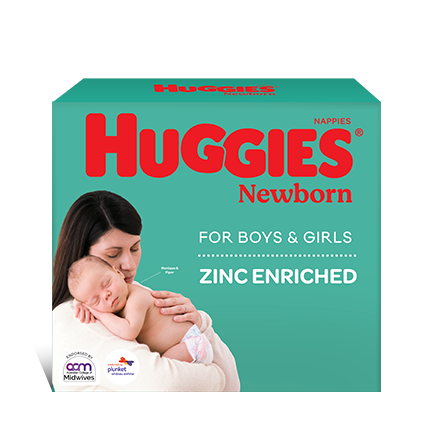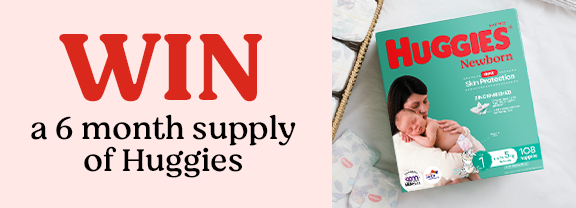In 2010, Steve Jobs personally phoned a New York Times tech writer. He wanted to berate him about a shortcoming the journalist had highlighted in Apple’s original tablet. “So, your kids must love the iPad?” the reporter asked, trying to change the subject.
“They haven’t used it,” said Jobs “We limit how much technology our kids use at home.”
If only it were that easy.
As your toddler grows, screentime will almost certainly be more of an issue. Australian health guidelines recommend exactly none at all for children under two, and no more than an hour a day for kids aged between two and five. But while it may pay to delay your child’s immersion in the digital world, technology can also be a huge asset to new parents—whether they’re raising their first child or their fifteenth.
(Also, you’re only human. While a zero-tech policy for your kids when at home might be laudable, circumstances change. Anyone who can’t see the value of a digital tablet to captivate children on long car trips or commercial flights is either a masochist, lunatic, or on their way to a bitter epiphany at 12,000 feet.)
If you can’t eliminate screentime, you can at least use technology in ways that are both useful and educational. But today’s tech is a lot more than just screens.
From Alexa and Siri to feature apps, to the self-explanatory brilliance of YouTube advice and kid-friendly Spotify playlists, a considered approach can make digital assistance a godsend—whatever its form. Add more traditional parenting aids such as smart baby monitors, infrared thermometers, and powered rockers and bouncers, and there’s an avalanche of both high- and low-tech available to assist you in your first years of parenthood.
1. “Hey Google, when do babies start teething?” Using Voice Activated assistants
Few things are more stressful than falling headlong into a yawning gap in your baby knowledge at 2am. This is a perfect time to lean on your preferred digital assistant for help, whether it goes by the name of Siri, Alexa, or “Hey Google”. But if you’re constantly remembering stuff at inopportune times, it’s also simple to say “Alexa, remind me to run the bath in two hours” or “Hey Siri, make a note with ‘rusks, formula, bananas, kids’ paracetamol, and Scotch”. Check out the Huggies Alexa skill created for toddlers here.
2. Feel the heat – digital thermometers
Perhaps the relatively recent development of touchless forehead thermometers does not seem like a big deal to non-parents. They are safer than mercury thermometers. Plus the benefit of being able to check a snoozing tot’s temp by leaning over their bassinet and zapping their exposed forehead, rather than rousing them from a sleep it took hours to achieve.
Easy-to-check bathwater thermometers are also handy, if not as crucial—look for one with a digital readout, rather than a colour strip, the latter of which are slower to work and frustratingly imprecise when you’re trying to cool the bath back down.
3. Electric rockers
It’s typical for a new baby to sleep bedside in mum’s room at the hospital in a utilitarian rectangular heavy plastic crib that sits on a wheeled trolley, which helps the nurses move bub between rooms. The crib’s casters also allow you to gently rock baby back and forth, helping to calm them. Powered rockers and bouncers deliver this same sort of functionality to your home, and while Red Nose advises never to use them unsupervised (it’s a SIDS risk: https://rednose.org.au/news/dont-sleep-your-baby-in-a-rocker), they can help maintain your sanity, for example, while you’re completing chores close by and are supervising your baby at all times.
4. Parenting? There’s an apps for that.
From free white noise generators to milestone apps like The Wonder Weeks, which tracks developmental leaps, to make-do baby monitors you can use in a pinch by downloading the app to yours and your partners linked smartphones, there’s definitely an app for that. Other apps like Tiny Hearts, which provides potentially lifesaving advice on topics like CPR for babies, are worth having on your phone—as is Aunty’s ABC Kids, which allows you to set screentime limits.
5. Baby monitors
Digital baby monitors are a huge leap forward from the audio-only devices of a generation ago, offering features such as movement activation, the ability to add extra cameras, and the surety of a brightly coloured image to check on your infant from a distance. (Some audio-only monitors have a range of up to 600m in an open area, while others can show clear video from 450m away.) And with two-way speakers, you can coo to your child even as you trot back to the room.
6. Managing screentime
The one general exception to advice against screentime for children under two years is video chatting. Experts say it can help support the development of language and social skills, as well as strengthen connections with (often distant) family. If curbing your kids’ time in front of TV or device is a concern—as it is for over 90 percent of Australian parents—academic Kate Highfield says you should try to concentrate on quality content over filler (e.g. educational TV, such as Numberblocks or Play School), and to engage with the show along with them (for example, by asking what they like about the shows they’re enjoying).
Oh, and if you can, avoid modelling bad screen behaviour. Steve Jobs managed to keep his kids away from screens.. The less time you spend scrolling in front of them, the further in front they’ll be.
Written for Huggies by Ben Smithurst. Feb 2023. Ben is a father of two, dad blogger, and journalist from Sydney. You can find more of his work at directadvicefordads.com.au.
Reviewed by Jane Barry midwife and child health nurse. Feb 2023.


Last Published* May, 2024
*Please note that the published date may not be the same as the date that the content was created and that information above may have changed since.






























